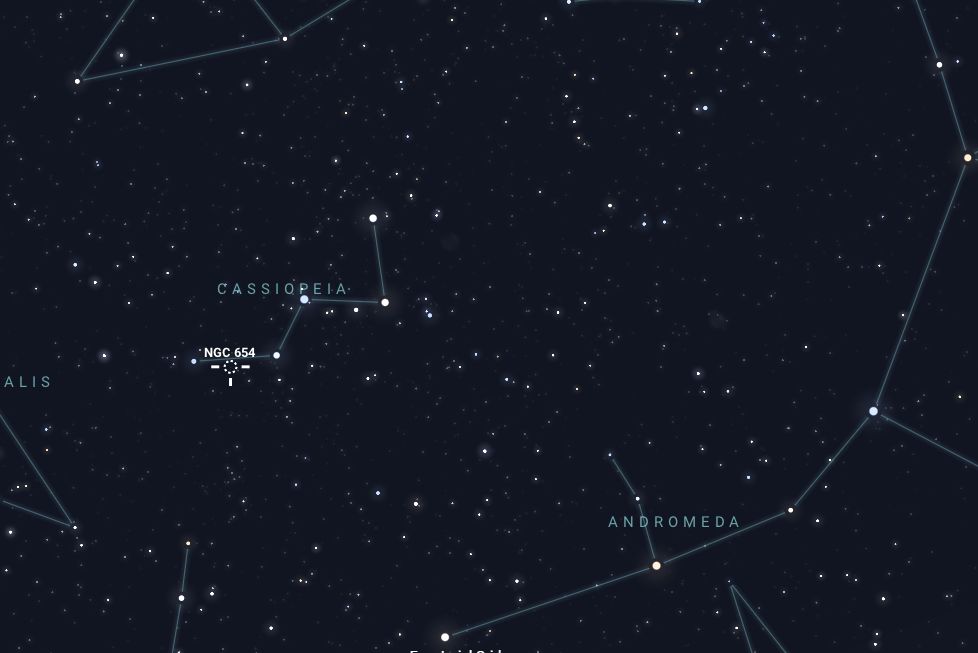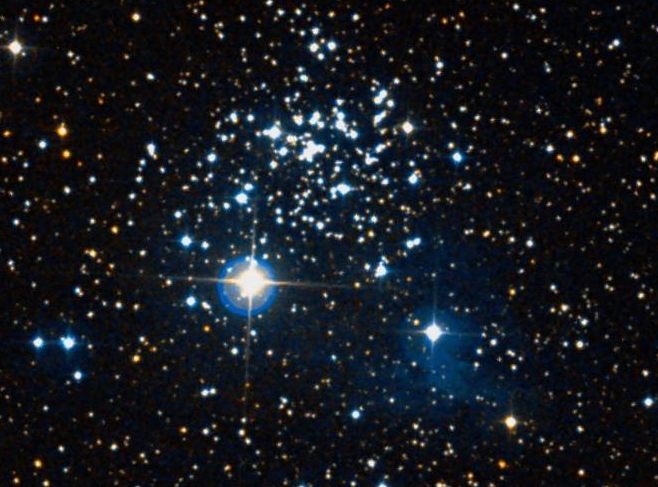NGC 654, also known as the Fuzzy Butterfly Cluster, is an open star cluster situated in the northern constellation Cassiopeia, near the border with Perseus. Located in the southern region of Cassiopeia, it lies approximately 7,800 light-years from Earth. The English astronomer William Herschel first identified this cluster in 1786, and it was later included in his New General Catalogue (NGC). With its dense grouping of bright stars, NGC 654 is a captivating object for observation and study.
Physical Characteristics
NGC 654 is a relatively young open star cluster, estimated to be around 14 million years old. It consists predominantly of hot, blue stars, indicating its youth, with some evolved red giant stars also present. The cluster has an apparent size of approximately 5 arcminutes, corresponding to a physical diameter of roughly 10–12 light-years. This compact structure gives it a concentrated and visually striking appearance against the backdrop of the Milky Way.
The stars in NGC 654 are tightly packed, giving the cluster a dense and cohesive form that stands out even in small telescopes. The compact nature of this cluster also contributes to its slightly “fuzzy” appearance, which can change depending on the observer’s equipment and local viewing conditions. With the right telescopes, individual stars within the cluster can be resolved, revealing its rich assortment of hot, blue stars alongside the occasional red giant.
Observation
NGC 654 is a popular target for amateur astronomers, thanks to its brightness and accessibility. With an apparent magnitude of approximately 6.4, it is just beyond the threshold of naked-eye visibility but is easily spotted with binoculars or a small telescope under dark skies. When viewed with binoculars, NGC 654 appears as a faint, hazy patch, while telescopes can reveal the cluster’s individual stars.
Best observed from the Northern Hemisphere, NGC 654 is visible during fall and winter, particularly from October through January. During this period, Cassiopeia is high in the sky, allowing for optimal viewing opportunities. For those in darker regions, a telescope will unveil the cluster’s true beauty as its stars can be seen distinctly within their compact, glittering arrangement.




